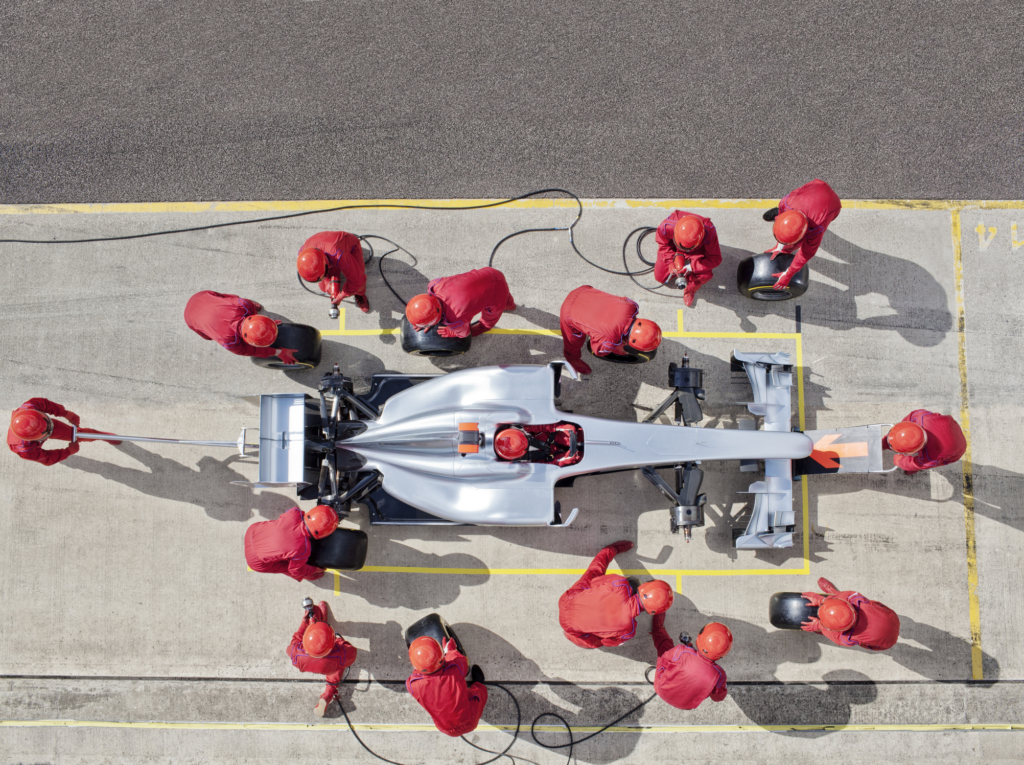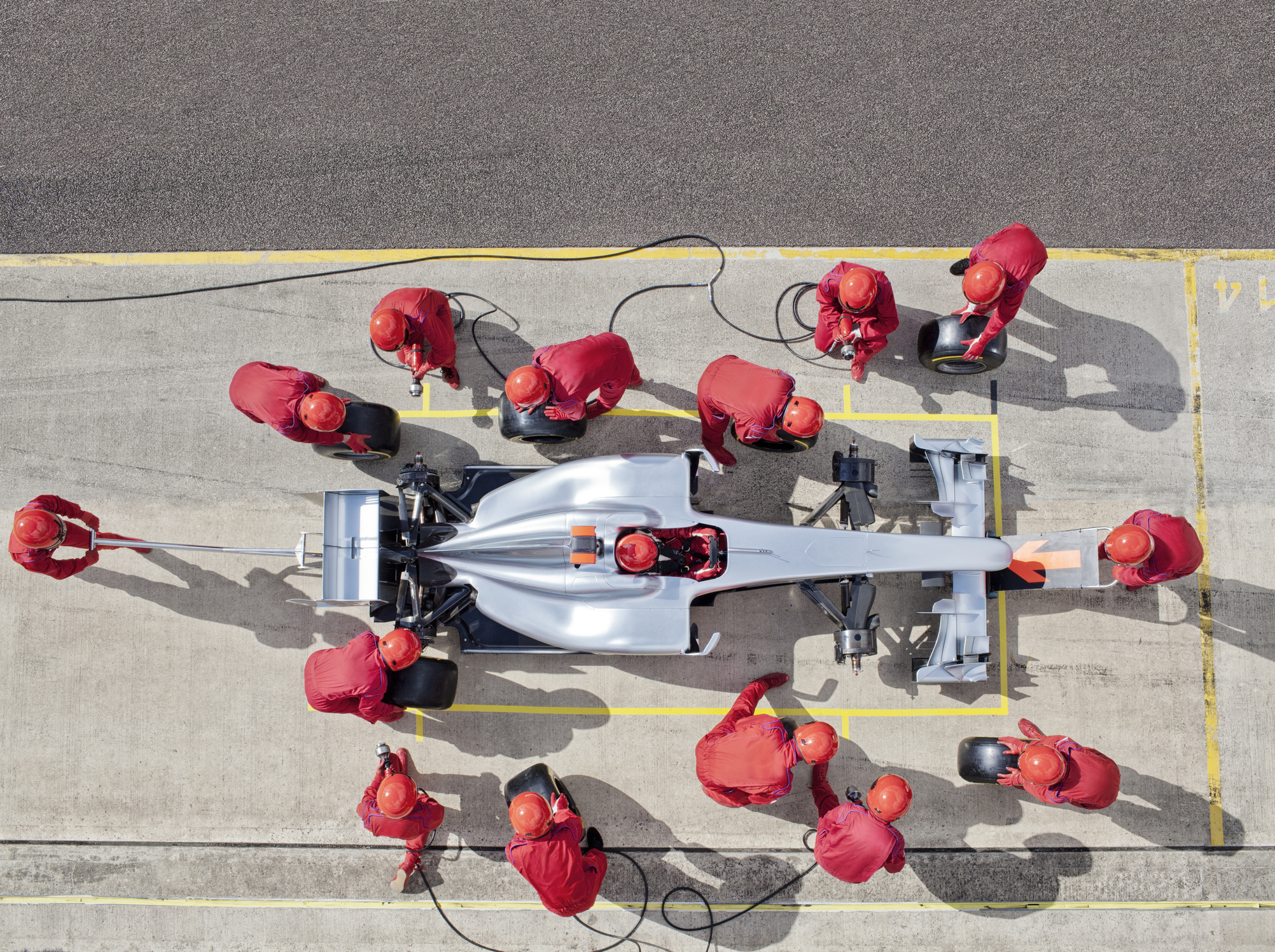“Companies rarely die from moving too fast and they frequently die from moving too slow.”
Reed Hastings, CEO, Netflix
Whether you’re watching a kid’s soccer game on Saturday morning, tuning in to the Olympic games, or ordering a sandwich for lunch, there is nothing more captivating than velocity in action. We notice the fastest six-year old soccer player racing down the field, are awed by Usain Bolt sprinting across the finish line to set a world record and are incredulous as the cash register clerk at Jimmy John’s hands us our #7 Spicy East Coast Italian sub—hold the mayo, extra hot peppers—before we’ve finished paying. “Freaky Fast” speed, channeled in the right direction, defines velocity. And velocity applied to your business can create strategic direction and lend a competitive advantage.
Speed is a scalar value, meaning it’s the time rate at which an object is moving along a path. Velocity is a vector, which encompasses both the rate and direction of an object’s movement. In the business arena, we observe speed all around us in a flurry of various activities, some of which create value and many others which don’t. It’s “direction” which becomes the crucial component in business success. Gallup research with 10 million managers over the past 30 years shows that 78 percent of employees do not believe their leaders have set clear strategic direction for their business. This is alarming because additional research finds that strategic direction is the most important factor that improved organizational health. A lack of velocity equals a sick and struggling business on a downward spiral.
In facilitating the exploration and development of strategic direction with executive leadership teams during the past 20 years, I’ve found three areas where improvement in velocity can supercharge your team’s performance.
1.Insight Velocity. An insight is a learning that leads to new value. One reason so many organizations struggle to break free from the gravitational force of market mediocrity is because they are using dead plans. A dead plan is one that is not updated with new thinking and insights. Insight velocity is at the core of the recent domination of the Formula One (F1) international racing series by the Red Bull Racing team. They have won all six of the races this year, and a few years back, their pit crew set the world record for a pit stop in the blink-of-an-eye 1.82 seconds in which all four tires are changed, the driver’s helmet visor is cleaned, and any other necessary adjustments are made.

The high stakes competition of F1 racing has driven teams to increase their insight velocity in all areas. Pit stops took approximately one-minute and seven seconds back in the 1950’s and now average a blistering 2.0 – 2.5 seconds. Efficiently completing the roughly 36 tasks involved in a pit stop in two seconds requires an obsessive commitment to continuous learning and improvement.
Red Bull Racing’s recent success is also attributable to other areas where they’ve gained insights that others lack. For example, they’ve designed an innovative bulbous shaped central section of the diffuser which has helped decrease the pressure of the downstream airflow. In plain English, that means the car has less drag and their DRS (Drag Reduction System) performance has competitors such as Ferrari trying to copy it in hopes of catching up. It’s important to remember that insight velocity drives your evolutionary velocity—the ability to understand, adapt, and thrive in the current environment.
On a scale of 1 to 5 with 1 being a snail and 5 being an F1 car, what would you rate your team’s insight velocity—your ability to take new learnings and convert them into actionable value that leads to advantage?
2.Decision Velocity. When we set strategic direction, the process of resource allocation inherently follows. A key component in effectively allocating resources into a unique system of activities (strategy) is decision making. Decision velocity is critical to both individual and organizational success. A study of 17,000 CEOs found that for those who rated low on decisiveness, 94 percent scored poorly because they were too slow in making decisions. Stephen Gorman, former CEO of Greyhound, noted, “A bad decision was better than a lack of direction. Most decisions can be undone, but you have to learn to move with the right amount of speed.”
One reason executives are slow to make decisions is because they’re making too many decisions in the first place. Weighing in on decisions that are not at your level rob you of the time to focus on the decisions that truly matter and that only you can make. Jeff Bezos, founder of Amazon says, “As a senior executive, what do you really get paid to do? You get paid to make a small number of high-quality decisions. Your job is not to make thousands of decisions every day. If I make three good decisions a day, that’s enough.”
Elon Musk, involved in the development of four companies that have generated more than a billion dollars in revenue each (PayPal, Tesla, SpaceX, and Solar City), uses the scientific method approach to decision making. Musk’s process includes six steps:
1) Pose a question that encapsulates the decision.
2) Collect relevant information and data about the decision.
3) Develop principles based on the intelligence collected and assign each a probability of truth.
4) Work backward to determine if these principles are relevant, correct, and lead to a decision.
5) See if the decision holds up by trying to disprove the underlying principles.
6) If the decision does hold up, then make it.
At SpaceX, this decision velocity has led to successful entry into the complex rocket industry. Despite its complexity, Musk has driven his team to make decisions and execute those decisions at a meteoric pace. Way back in 2010, Musk was quoted as saying, “We now have Falcon 9 and Dragon rockets in steady production at approximately one F9/Dragon every three months. The F9 production rate doubles to one every six weeks in 2012.” When people realize SpaceX can build a rocket in a few months, it infuriates people in companies where decision making slows them down and prevents them from moving with greater velocity. In fact, research shows 86 percent of managers are not satisfied with the speed of decision making in their companies. Are you?
When it comes to your business, are decision rights clear? Does everyone know who is responsible for what by when?
3.Execution Velocity. One of the reasons it’s so important to have your strategic direction captured in a 2-3 page action plan is because people can’t read your mind. In order to have people setting their strategies in ways that lead to the overarching goals and objectives, there needs to be clarity and consistent communication of the strategic direction. Another powerful reason to share strategy in a brief visual way is that research has found teams are 40 percent more committed to the execution of strategy when they believe their leadership is competent and capable of setting strategic direction.
To increase your execution velocity, it’s important to understand the ecosystem in which the tasks and players exist. A helpful exercise is to visually map your ecosystem. Start by identifying the key players and represent them in large spheres. Then attach the tasks and activities (represented by smaller spheres) they are responsible for with spokes. Look for ways to enhance or modify these relationships, activities, and tasks to make the ecosystem more effective and efficient.
Amazon has done this brilliantly in their online retail business to build a strong foundation of competitive advantage through execution velocity. A key enhancement they made to the ecosystem was to introduce the fulfillment center concept. These centrally managed fulfillment centers have enabled Amazon to optimize its supply chain and accelerate the execution of orders to the point where a number of goods can be ordered and received within hours. One Amazon fulfillment center can serve a region consisting of possibly one or two states, whereas competitors may have one warehouse for just a few of its stores. This enables Amazon to use their execution velocity to stock more products and deliver those faster than others. Amazon’s execution velocity has universally altered the consumer perception of value to the point where more than 60 percent of people expect any product they order to be delivered in two days or less.
How could you apply execution velocity to your business in order to increase value and differentiate from the competition?
Peak behind the curtain of a successful company and you’re likely to find at least one type of velocity—insight, decision, or execution—driving that success. While the adage “slow and steady wins the race,” is a pleasant-sounding moral of the story for animal parables, it’s better in business to be quick like a bunny than wind up as turtle soup.
